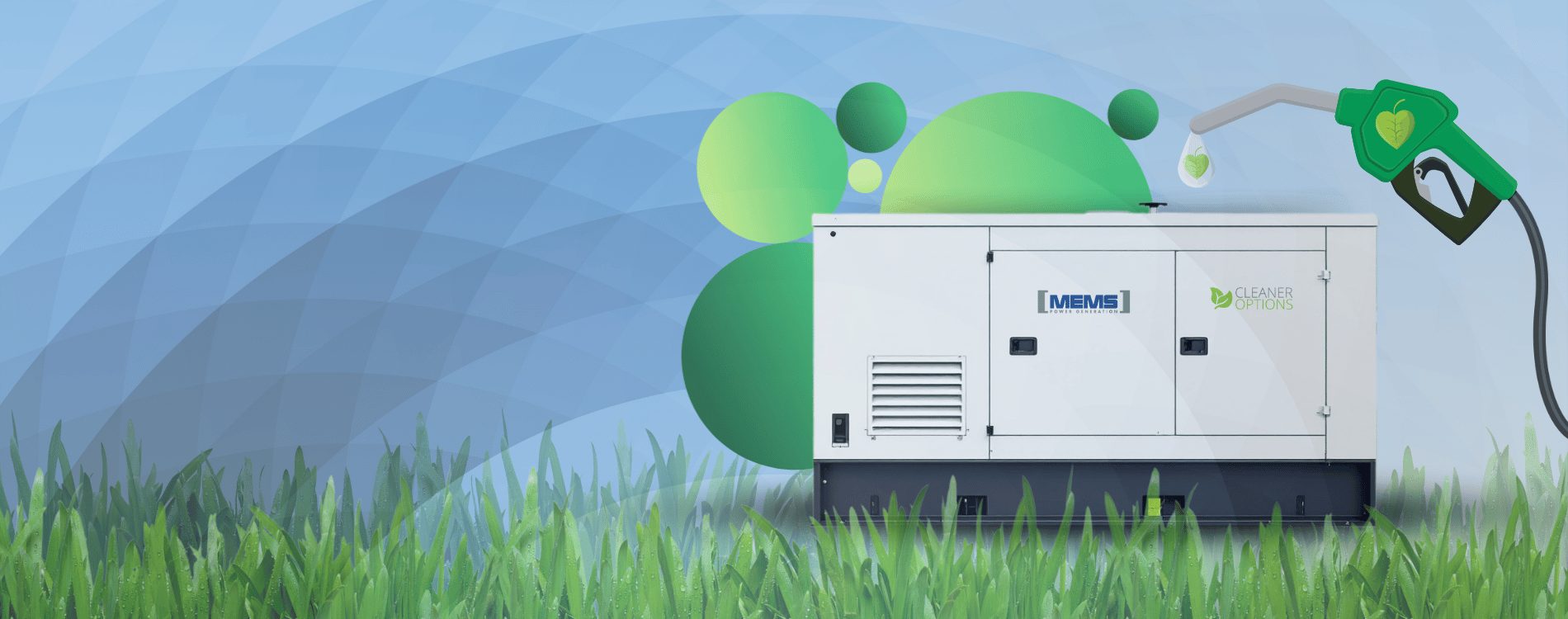HVO Carbon Savings: Powering the UK with Lower-Carbon Temporary Power
In 2025, MEMS customers are on track to save thousands of tonnes of CO₂e by choosing cleaner fuel options such Hydrotreated Vegetable Oil (HVO) for temporary generator hire. This shift to renewable fuel is helping industries including construction, healthcare, and events meet their sustainability goals – all without sacrificing the dependable power they need to operate.
Why HVO Carbon Savings Matter
Made entirely from renewable waste and residue materials, HVO fuel can cut lifecycle greenhouse gas emissions by as much as 90% compared to conventional diesel. It’s fully compatible with approved diesel engines and requires no modifications – making it a practical, immediate way to lower emissions on any suitable project.
Cleaner Power, Same Reliability with HVO Carbon Savings
Our nationwide sustainable generator hire service delivers performance you can trust while significantly reducing environmental impact. The MEMS Cleaner Options range includes:
- HVO-ready generators – drop-in diesel replacement with up to 90% lower greenhouse gas emissions.
- Stage V generators – compliant with the latest EU emission rules.
- Battery Energy Storage Systems (BESS) – storing power and reducing generator runtime.
- Load on Demand – matching output to real-time demand to cut fuel waste.
More Than Fuel Efficiency
Our sustainability strategy goes further than fuel choice:
- Reduced waste and increased recycling across operations.
- Logistics optimisation to minimise vehicle movements.
- Fleet telemetry to improve efficiency in real time.
- Ongoing trials of future-ready solutions like hydrogen fuel cells.
By switching to HVO, our customers avoided releasing thousands of tonnes of CO₂e into the atmosphere. A clear example of how emissions can be reduced without changing how power is delivered.
Why Businesses Choose MEMS
- Nationwide coverage from two key depots.
- All equipment, transport, and refuelling handled in-house.
- 24/7 control room for genuine emergency response.
- Approaching 50 years of experience in temporary power solutions.
What’s Next?
We will continue to report on our carbon savings annually, backed by the latest conversion data and delivery volumes. Our HVO carbon savings, Cleaner Options, and low-emission technology investments reflect a practical approach to sustainability.
Temporary power doesn’t have to come at the cost of environmental impact. MEMS Power Generation takes a practical, data-led approach to sustainability. From fleet upgrades to fuel switching, we focus on delivering real reductions in carbon emissions across every part of our operation, not just for ourselves, but for every customer we support.
Additional Ways MEMS Helps Reduce Your Carbon Footprint
At MEMS, sustainability is built into every aspect of our service. Beyond HVO, we offer a suite of solutions under our Cleaner Options initiative that help reduce emissions, cut fuel use and improve efficiency.
Our Cleaner Options range includes advanced technologies designed to support lower-impact power generation across all sectors. This includes Stage V generators, Battery Energy Storage Systems, and Load on Demand configurations, all selected to reduce environmental impact without compromising performance.
Talk to our team today to learn how switching to HVO-powered generators can cut your emissions without compromising operational continuity.

Stage V Generators
These generators comply with the latest UK and EU emission standards, significantly lowering emissions of nitrogen oxides (NOx), particulate matter (PM), and carbon monoxide (CO). Ideal for operations needing low-emission equipment that still delivers.

Battery Energy Storage Systems
Our battery systems reduce CO₂e emissions by lowering generator runtime. They also offer silent operation, making them suitable for sensitive environments. When combined with generators, they help deliver optimised and efficient power.

Load on Demand
Load on Demand systems match generator output to actual site demand. This prevents overgeneration, reduces unnecessary fuel burn, and drives down overall emissions.
Sustainability in Action
A long‑established freight packaging specialist just two miles from Gatwick Airport faced a full power outage across two buildings. MEMS responded fast, on-site with a 200 kVA generator and bulk fuel tank within four hours.
Using real-time data from MEMS Connect, we identified overnight low-load periods and quickly upgraded the setup mid-project. We added a 45 kVA Battery Energy Storage System to handle quieter periods.
That switch reduced fuel use by around 43%, saving 2,542 litres and cutting CO₂ emissions by 6.8 tonnes over just 31 days.
Talk to us about achieving HVO Carbon Savings for your business.
Request a quote


